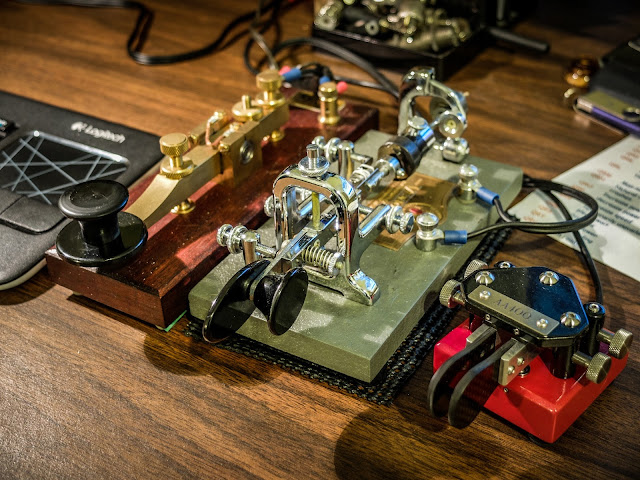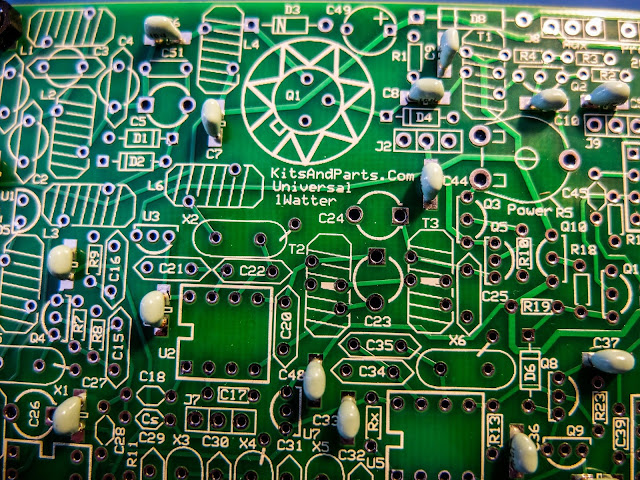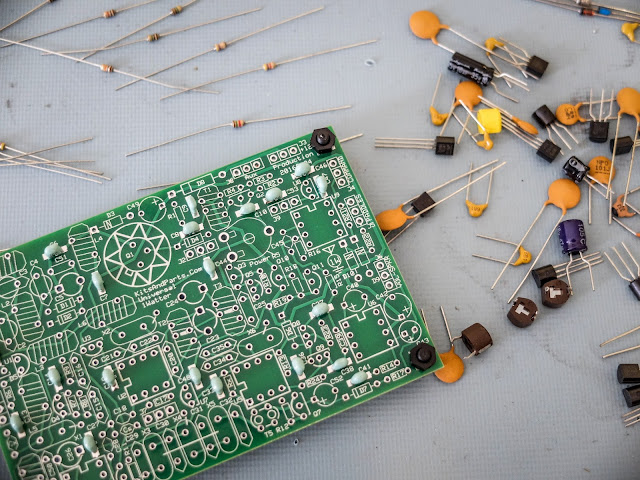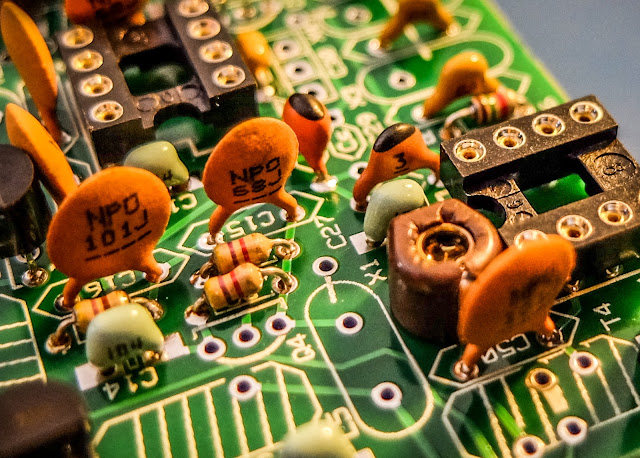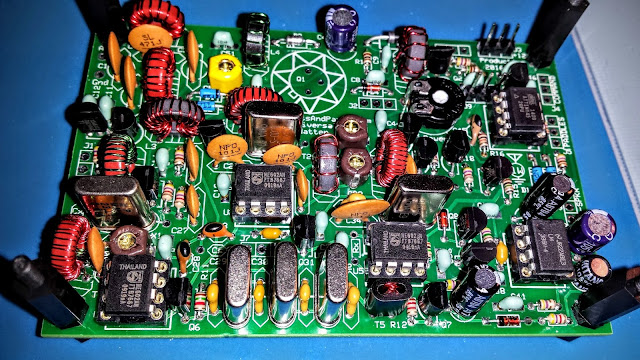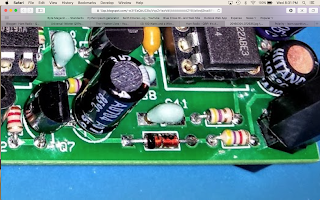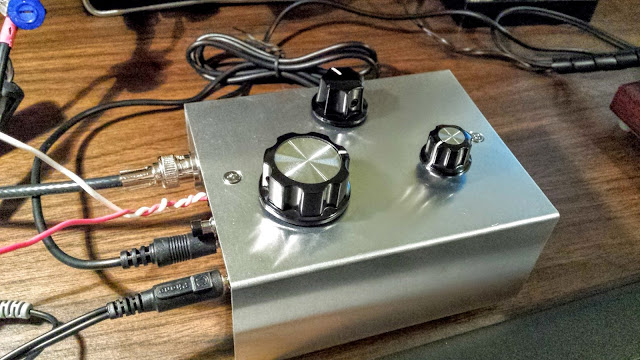How the End-Fed antenna get's a bad reputation
I regularly use an end-fed antenna when I operate portable because it's so easy to just get one end of it up in a tree. I then only have to get some coax to the balun and attach a couple of counterpoises to the radio ground for the band I want to work and voila I have an easy setup/tear-down antenna solution. The higher the feedpoint the better the antenna will perform, and as long as I have a good tuner I can work a lot of different bands.However when used in a shack you hear all manner of stories of how the end-fed random wire antenna absolutely wreaks havoc with RF at the station. So what's the deal?
What's going on with an end-fed antenna?
I'm still learning about this stuff so here's my simple minded understanding along with some results of my own experimentation.So when you put some fire in the wire (remember this is alternating current at a particular frequency) the RF will run down that wire and when it gets to the end it will run back. Part of the power will be radiated, the part that does not will come back and want to push against something.
In a dipole the power runs out one leg and when it runs back it has the other balanced leg of the dipole to run to and repeats the process until it's radiated either as a signal or heats up your coax. The end fed wire doesn't have that balanced leg to push against so it will flow back into your equipment and radiate from there along with anything it can find to get into that your equipment is attached to.
When your portable, operating low power, this isn't very noticeable and since I'm generally operating from a battery that returning RF isn't heading off into a power supply and into the mains, etc. But when operating from a shack and especially if I'm operating at QRO levels (gasp!) that RF can generate a hum in your equipment, distort your signal, bite you on the hand or lip depending on paths to least resistance. Worst case it can fry something in the shack or nearby sensitive electronic equipment.
Thus the bad rap.
Background
Here's my experience...At my QTH I reconfigured my external 40m Windom (aka OCF dipole) to an 80m OCF Dipole. When I was using the 40m Windom I could tune the 30m band without difficulty but the high impedance nodes occur in different places on the 80m OCF and make 30m over 10:1 SWR. Certainly not efficient and impossible to tune for some internal tuners. My attic doublet can tune 30m but my attic seems to be an especially noisy place for 30m and it was really limiting my ability to work 30m. I've discussed the woes of getting antennas outdoors at my QTH previously so I was looking for an easy way to get back on 30m.
I thought I'd give the much maligned end-fed a try
I cut about 150 feet of wire and attached it to the long-wire post of my trusty MFJ Deluxe Versa Tuner II and ran it up around my room and out out my 3rd story window to a tree in the front yard. It is very stealthy and doesn't raise the ire of the neighbors.
The MFJ matched the end-fed easily on 30m and reception was about 2 S-units less noise than with the attic antenna. So far so good. I made some contacts using 5w but was hearing some hum in my headphones so I knew something was rotten in Denmark (sorry Denmark).
I have some counterpoise wires running from the back of the tuner but when I took stock of what I had I realized none of them were 1/4 wavelengths for 30m. This afternoon I cut some of my surplus insulated 18 gauge wire 23ft long, insulated the end and attached it to the back of the tuner. I ran the counterpoise into the attic clear of other wiring and what do you know. No more hum.
I then tried the wattage up at QRO levels and still no hum. The RF just wanted something to push against to keep it out of the station wiring. I got good reports from RBN stations so the antenna is working for 30m.
| End Fed performance on 30m |
I know that a single counterpoise will likely create directivity to the signal so I'll need to add some more counterpoise wires but the moral of the story is that end-fed antennas are not evil, they are just misunderstood. Like a vertical, the RF just needs something to push against. In the case of a vertical if you have insufficient counterpoise at the feedpoint you just warm the earth. But in the case of the end-fed your equipment becomes the other side of the antenna. Not good.
End-fed antennas can be a useful solution
If you have limited options for deploying wire antennas, the end-fed is about the easiest type to deploy. I don't think it will give you the propagation of a dipole or doublet but it shouldn't be dismissed out of hand as an option. Just be sure to cut 1/4 wavelength counterpoise wires for the bands you wish to work and attach them to the ground of the tuner or ground side of the balun you are using for the long wire.Safety considerations
Keep in mind that the entire length of the end-fed wire is radiating starting right at the point where it exits your tuner/balun so position it in such a way that you or others will not accidentally touch it during operation. Also take care in how its routed so as not to put it near or run in parallel with house wiring.Ok so end-fed antenna's get a bad reputation for some good reasons and if you have other options use them first but don't completely put it out of the running if it can solve your antenna problem.
That's all for now
So lower your power and raise your expectations
73/72
Richard, AA4OO
